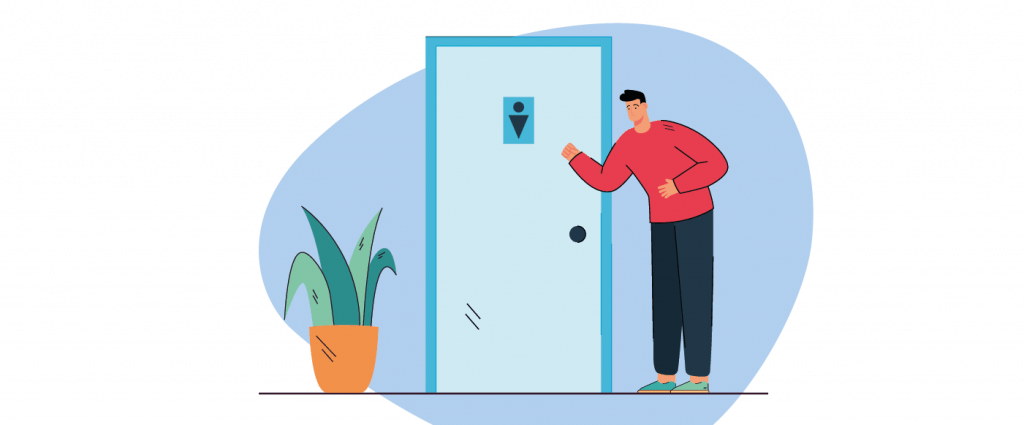Gérer l’incontinence infantile chez un enfant handicapé
Children’s incontinence can be difficult for any parent, whether you’re struggling to potty train your toddler, your kid suffers from urinary tract infections (UTIs),or you have a teen who’s wetting the bed. If you have a child with disabilities, it can be even trickier to manage this condition. So, in this article, we’ve gathered our top tips for managing incontinence in children with disabilities.
Incontinence and children with disabilities: what’s the link?
There is evidence that children with both physical and learning disabilities are more likely to experience urinary and faecal incontinence than their peers 1, with one study showing that 60.4% of nine-year-old children with disabilities experience some form of incontinence 2.This is due to a variety of factors.
When a child has physical disabilities, there can various mechanisms at play that can cause them to remain incontinent. For example, a child with cerebral palsy may not be able to use the muscles required to be continent, and a child with Down’s syndrome may have physical abnormalities in their kidneys, which cause issues around toilet training 3.
In other conditions, such as autism, a child may experience incontinence due to factors, such as being nonverbal and unable to communicate when the toilet is needed 4. Additionally, constipation is relatively common in children with learning and physical disabilities5,which in turn can worsen symptoms of incontinence6.

Some additional disabilities that may be accompanied by bladder issues include:
- Fragile X syndrome (a genetic condition causing a range of developmental issues)
- Klinefelter syndrome (where male babies are born with an extra X chromosome)
- Multiple sclerosis
- Paralysis or spinal cord injury
- PKU (phenylketonuria; a rare inherited disorder)
- Spina bifida7
- Moderate to severe learning disabilities 8.
However, as children with disabilities may find it difficult to verbalise their concerns, or parents and healthcare professionals simply view incontinence as part of the wider picture of their disabilities, bladder or bowel conditions may go undiagnosed. As such, iD recommends you speak to your doctor if you have any concerns at all with your child’s toileting habits.

How to manage incontinence in a child with disabilities?
As said above, dealing with incontinence in children with disabilities can be trickier than with their peers due to physical and developmental delays. Here are our top tips for managing this situation:
- Use the correct continence products. The iD Comfy Junior range features super-soft underwear and slips that will keep your little one feeling fresh and dry. With sizes for ages 4-15, the iD Comfy Junior pants are designed just like real underwear with amazing absorbing power – perfect for helping children with disabilities with their incontinence.
- Make sure your child drinks enough to stay properly hydrated.
- Ensure your child goes to the toilet regularly and full empties their bladder9.
- If you have concerns, ask your doctor for a bladder and bowel assessment, which will not only evaluate their bladder health but also help to prevent urinary tract infections10 .
- Treat your child with dignity when you have to help them with toileting to give them a sense of independence 11.
Bearing these tips in mind, you should find it much easier to manage incontinence in children with disabilities. If you are concerned that your child has an overactive bladder, why not check out our article on the subject?
Sources
1 “Continence Promotion in Children with Additional Needs”, Bladder and Bowel UK, 2018, Source: https://www.bbuk.org.uk/wp-content/uploads/2018/08/Understanding-bladder-and-bowel-comorbidities-in-children-with-additional-needs.pdf
2 “Urinary Incontinence in Physically and/or Intellectually Disabled Children: A Multifactorial Problem”, Erik Van Laecke, Piet Hoebeke, Ann Raes and Johan Vande Walle, April 2010, Source: https://www.sciencedirect.com/science/article/abs/pii/S1477513110001579
3 “Incontinence in Children with Special Needs”, Aimee Sharp, 21 June 2018, Source: http://www.shieldhealthcare.com/community/grow/2018/06/21/incontinence-in-children-with-special-needs/
4 Ibid.
5 “Addressing continence in children with disabilities”, NT Contributor, 17 October 2014, Source: https://www.nursingtimes.net/roles/childrens-nurses/addressing-continence-in-children-with-disabilities-17-10-2014/
6 “Causes Urinary incontinence”, NHS, 7 November 2022, Source: https://www.nhs.uk/conditions/urinary-incontinence/causes/
7 “Continence support for children with disabilities”, National Association for Continence, 2015, Source: https://static1.squarespace.com/static/597f302ed1758e9e17ad4099/t/5b5232fe575d1f2e1d27af13/1532113688061/Children+with+Disabilities+-+NAFC.pdf
8 “Continence Promotion in Children with Additional Needs”, Bladder and Bowel UK, 2018, Source: https://www.bbuk.org.uk/wp-content/uploads/2018/08/Understanding-bladder-and-bowel-comorbidities-in-children-with-additional-needs.pdf
9 “Addressing continence in children with disabilities”, NT Contributor, 17 October 2014, Source: https://www.nursingtimes.net/roles/childrens-nurses/addressing-continence-in-children-with-disabilities-17-10-2014/
10 “Continence Promotion in Children with Additional Needs”, Bladder and Bowel UK, 2018, Source: https://www.bbuk.org.uk/wp-content/uploads/2018/08/Understanding-bladder-and-bowel-comorbidities-in-children-with-additional-needs.pdf
11 “Incontinence and Learning Disabilities”, Lucy Debenham, 7 April 2016, Source: https://www.aboutlearningdisabilities.co.uk/incontinence-learning-disabilities.html
